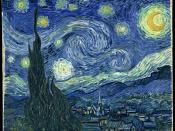QUESTION
The relationship between creativity and mental illness is widely recognized in the medical field, although little research exists under the conditions of a controlled experiment. Studies exploring the facets of the prescribed cognitive function are centered on afflictive illness, specifically bipolar disorder. Consequently, the objective of the present research is to demonstrate the varying levels of creativity displayed by bipolar patients at different stages as compared with a group under the effect of the medication, lithium. Experimentation is reflective of the regular and elated states in bipolar disorder, thus depression is not evaluated. In addition, use of a normal control group will also allow for comparative analysis of creativity in bipolar subjects versus controls. The reasoning for this experiment is to derive a pragmatic overview of the association between creativity and bipolar disorder. Derived results will provide general creative circumstances representative of an individual bipolar patient at different stages, omitting control results.
Therefore, the research question is: What is lithium's effect on creativity as compared with manic, hypomanic, stabilized bipolar, and control subjects?
BACKGROUND AND SIGNIFICANCE
There are intriguing implications for further understanding of the association between creativity and mental illness. The dynamic of these elements has become the focus of much debate, stimulating contrasting studies on the nature of the relationship. Prominent research strategies identified by Jamison include, "historical and biographical studies, systematic diagnostic and psychological studies of living writers and artists, and studies of creative ability in affectively ill patients" (1989, pp. 125-126). The majority of existing research is anecdotal in nature and often converges on eminently creative individuals, usually artists or scientists, through life studies. A majority of Jamison's studies are correlational and, as such, insufficient to justly examine the relationship between affective illness and creativity, use of an experimental design is preferred (Weisberg,


